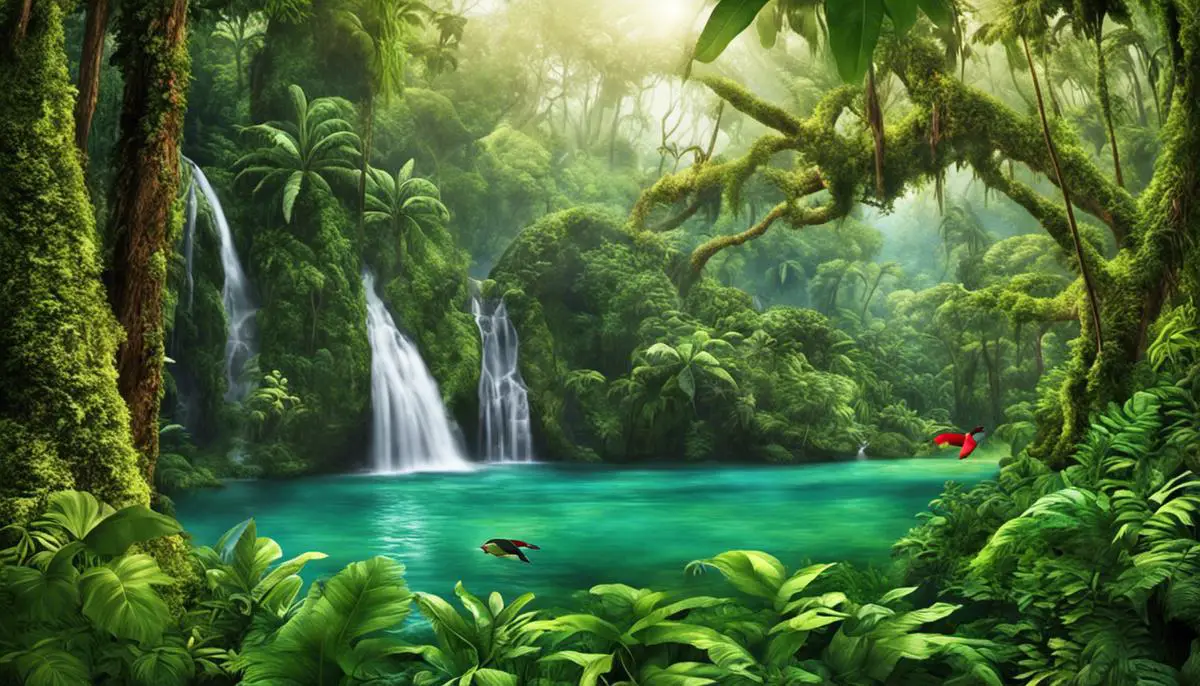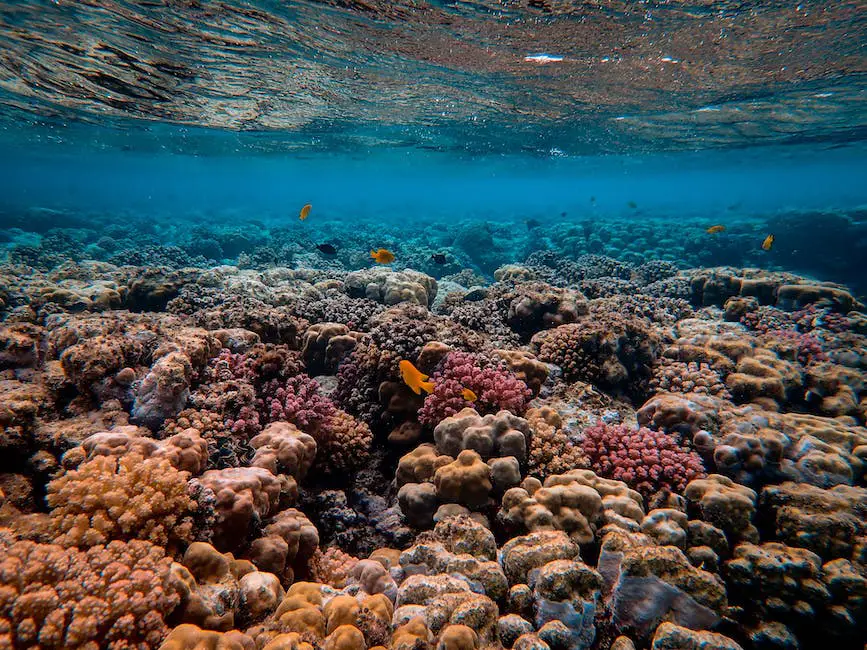What is climate change impact in tropical regions? This article discusses what to expect if you live in the tropics when the weather gets awfully warmer or hotter than usual.

Across the globe, the pressing issue of climate change has been progressively amplifying concerns about the future of our planet. From the heartland of equatorial rainforests to the marine realms of vibrant coral reefs, this grave environmental crisis is instigating daunting transformations. Specifically, the tropical regions – the planet’s repositories of immense biodiversity and ecological balance – are experiencing significant upheaval wrought by navigating new, unsustainable climates.
Furthermore, the human communities that smoothly intertwined their existence with these ecosystems face menacing disruptions in their traditional lifestyle, amplifying socio-economic problems. On a more hopeful note, this crisis has spurred concerted efforts towards devising a gamut of mitigation strategies and innovative technological solutions for challenging times ahead.
Now, let’s see how this issue of climate change is impacting on the tropical areas namely the rainforests, coral reefs, and human communities. Le us also explore the strategies to counter the effects of climate change which appears to be inevitable.
Table of Contents
1. Effects on Rainforests
Climate Change Impact on Tropical Rainforests
The world’s tropical rainforests, connoted as ‘Planet Earth’s lungs’ due to their pivotal role in global oxygen production and carbon dioxide absorption, are standing at a critical juncture. Increased anthropogenic climate change now strikes at the very heart of these sanctuaries of biodiversity, potentially disrupting an intricate ecological equilibrium honed over millions of years.
To understand these ecological transformations, it is essential to first grasp the underlying mechanisms of climate change. Greenhouse gas emissions, largely from the burning of fossil fuels, cause global-average surface temperatures to rise—a phenomenon globally recognized as ‘global warming.’ It is this warming effect that interfuses with dynamic meteorological variables and instigates profound transformations within our rainforests.
Climate change is significantly affecting the hydrological cycles of tropical rainforests. A warming climate has led to drastic alterations in rainfall patterns, with a predicted increase in extreme rainfall events and periods of prolonged drought. Extreme rainfall can lead to soil erosion, washing away essential nutrients necessary for plant growth, whereas droughts may make forests more susceptible to fire.
The world’s rainforests have evolved to thrive in a stable climate, and as such, minor changes in the average temperature or precipitation can have profound implications. With global temperatures estimated to rise by 0.2°C per decade, heat stress on flora and fauna becomes an inevitable consequence. Phenomena such as forest dieback, where a significant number of trees lose leaves or die, are becoming increasingly prevalent. This scenario not only shifts the compositional structure of these ecosystems but also diminishes their carbon-sequestering capacity, hence amplifying the feedback loop of global warming.
In addition, climate change indirectly facilitates the proliferation of insect pests and pathogens. As temperatures rise, the metabolic rates of these organisms increase, accelerating their reproduction and spread. This trend not only poses a significant threat to plant health but can also disrupt larger food networks within these ecosystems.
Looking at climate models, evidence suggests that the Amazon rainforest—which constitutes over half of the planet’s remaining rainforests—could transition into a savannah-like ecosystem if current warming trends persist. Losing this significant chunk of tropical rainforest would not only be a catastrophic loss in terms of biodiversity but would also severely diminish our collective ability to limit global temperature increases within the targets set by the Paris Agreement.
In conclusion, the transformative impact of climate change on tropical rainforests is a complex, multifaceted issue. It ties together elements of atmospheric science, biology, and ecology, and strikes at the heart of the delicate balance that governs these vibrant biospheres.
As we continue advancing into our anthropogenic era, it will prove crucial to continue rigorous research and dialogue on these matters, hopefully inspiring actions that protect these vital ecosystems for future generations.

2. Impacts on Coral Reefs
Climate Change Effects on Tropical Coral Reefs
Residing primarily within the balmy tropical regions, coral reefs are captivating marvels of nature teeming with an abundant array of biodiversity. These underwater ecosystems, however, are not immune to the escalating threats posed by climate change. The extent of climate change effects on these biologically diverse marine structures has gained paramount importance in the scientific discourse of the Anthropocene era.
Typically thriving in a narrow temperature range between 73°F and 84°F, coral reefs bear the brunt of increasing oceanic warming. The past few decades have borne witness to a persistent rise in sea surface temperatures, precipitated by a global surge in greenhouse gas emissions. This temperature rise ushers in the distressing phenomenon of coral bleaching. Keenly subject to their hosted photosynthetic algae, zooxanthellae, for sustenance, corals are ‘bleached’ when this mutually advantageous relationship is severed due to heat stress. The mass bleaching events of 1998 and 2016 stand testimony to this calamitous effect of climate change on the planet’s distinct underwater beauty, with vast expanses of coral reefs whitened, subsequently succumbing to infectious diseases and mortality.
Climate change also indirectly instigates the ocean’s water acidification. An elevated absorption of human-emitted carbon dioxide across the ocean surfaces instigates a feisty chain of chemical reactions, culminating in surging levels of hydrogen ions. This, in turn, results in a decrease in carbonate ions which facilitate coral skeletons’ formation and growth. A limited availability of carbonate ions prompts a fundamental challenge to the corals’ skeletal architecture, undermining the rigidity and resilience of the coral reefs.
Sea-level rise, yet another by-product of climate change, has been forecasted to have a mixed impact on coral reefs. While some studies suggest a potential ecological advantage through increased depth ranges for coral growth, the frequency and intensity of coral reef inundation could potentiate a detrimental impact on these marine ecosystems.
The frequency and intensity of tropical storms, reportedly linked to climate change, have severe implications for coral reefs as well. Such strikes inflict physical damage on the reefs, fragment colonies, and alter species compositions, effectively destabilizing the intricate yet delicate structure and function of these ecosystems.
In an emerging cause of concern, plastic pollution, magnified by climate change-induced alterations in oceanic circulation patterns, renders coral reefs defenceless to diseases. The myriad microscopic abrasions and cuts caused by intermingling with plastic waste expose corals to novel pathogens.
Examining these diverse impacts, it is increasingly clear that climate change represents a profound threat to the structural integrity, biodiversity, and effective functioning of coral reefs globally. The vitality of these systems is, therefore, dependent on urgent coordinated approaches to mitigate and adapt to climate change.
Science stands poised at the crossroads, harnessing an increasing body of knowledge to advocate for coral reef resilience, and mobilizing collaborative efforts to safeguard the Earth’s underwater treasures.

3. Influence on Human Communities
The impacts of climate change on both rainforests and coral reefs are not only disrupting local ecosystems but also the human communities that rely on them for food, livelihoods, and cultural traditions. The far-reaching influence of these tropical ecosystems on global biodiversity and climate mitigation warrants urgent concerted actions, emphasizing the mutual benefits of habitat conservation and climate change mitigation. Climate resilience needs to be meticulously woven into the fabric of our societal and economic systems, with the challenges posed by climate change requiring innovative multidisciplinary solutions.
Ultimately, the health of these ecosystems is inextricably tethered to our own well-being. Thus, it becomes imperative for us to recognize and value their significance in maintaining the Earth’s balance, reminding us that by safeguarding them, we not only uphold an intricate display of life but also secure our collective future.
Strategies for Mitigation and Adaptation
Mitigation and adaptation strategies to address climate change in tropical regions draw upon a mix of technological, ecological, socio-political, and economic measures. One key strategy is Reducing Emissions from Deforestation and Forest Degradation (REDD+), a policy framework that offers financial incentives to countries to conserve their forests. By preventing deforestation, REDD+ effectively safeguards the massive carbon stocks contained within intact tropical forests, thereby making a significant contribution to mitigating global carbon emissions.
Further to this, harnessing the potential of forest regeneration presents another promising strategy. Secondary forests, or forests growing after clearance or disturbance, can sequester considerable amounts of carbon as they grow. Intentionally allowing or aiding these forests to regenerate can thus contribute to mitigating climate change, while also providing habitat for wildlife and maintaining ecological function.
Another effective approach lies in the practice of agroforestry–the integration of trees into farming systems. Agroforestry can help sequester carbon, conserve biodiversity, and build resilience against climatic changes. Moreover, this strategy directly supports the livelihoods of many people in tropical regions by diversifying agricultural production and enhancing products for market.
Turning attention towards the seas, the protection and restoration of mangroves and seagrass meadows represent key adaptation strategies. These blue carbon ecosystems hold significant carbon stocks, help protect against sea-level rise and storm surges, support fish populations, and provide important livelihood resources for coastal communities.
Additionally, innovative coral restoration methodologies, such as coral gardening, microfragmentation, and assisted evolution, hold promise for helping reef systems adapt to changing climate. These involve growing corals in nurseries and then outplanting them onto degraded reefs or selectively breeding and propagating corals which exhibit resistance to warmer and more acidic conditions.
On the social-political front, Indigenous and Community Conserved Areas (ICCAs) leverage local knowledge of and connection to the land and sea for the stewardship of these resources. Recognizing and strengthening the rights of indigenous and local communities to their territories can be an effective strategy for climate change mitigation and adaptation.
Lastly, there is a crucial role for countries to play in making substantial commitments to reduce emissions, shifting towards renewable energy sources, investing in climate-smart agriculture, and supporting green infrastructure. More broadly, policy- and decision-making processes should be inclusive, transparent, and considerate of the unique contexts and sensitivities of tropical regions.

Conclusion
In closing, it becomes clear that fortified, coordinated, and intelligent action on various fronts provides the key to tackling the effects of climate change in these ecological nerve centers. Furthermore, it is imperative to integrate and address both the ecological and socio-economic dimensions of climate change to ensure the sustained health and integrity of our tropical regions and the planet at large.
Given the intricate relationship among the multitude of life forms in the tropics, the disruption caused by climate change echoes through every corner of these pivotal ecosystems. Whether it’s the largest jungle breathing life into numerous species or a small chunk of coral fostering marine biodiversity, the balance of these unique habitats is teetering on the edge of a severe ecological crisis.
The repercussions ominously lap at the edges of human societies as well, rubbing salt in the socio-economic wounds of the most vulnerable amongst us. Yet, all is never lost. As we go deeper into the accelerating change of these habitats, we also come up with creative strategies and technological innovations. These tools give us hope and bring us towards not only reducing the harm already inflicted but also towards strengthening the resilience of our societies and ecosystems in the face of an uncertain future.



